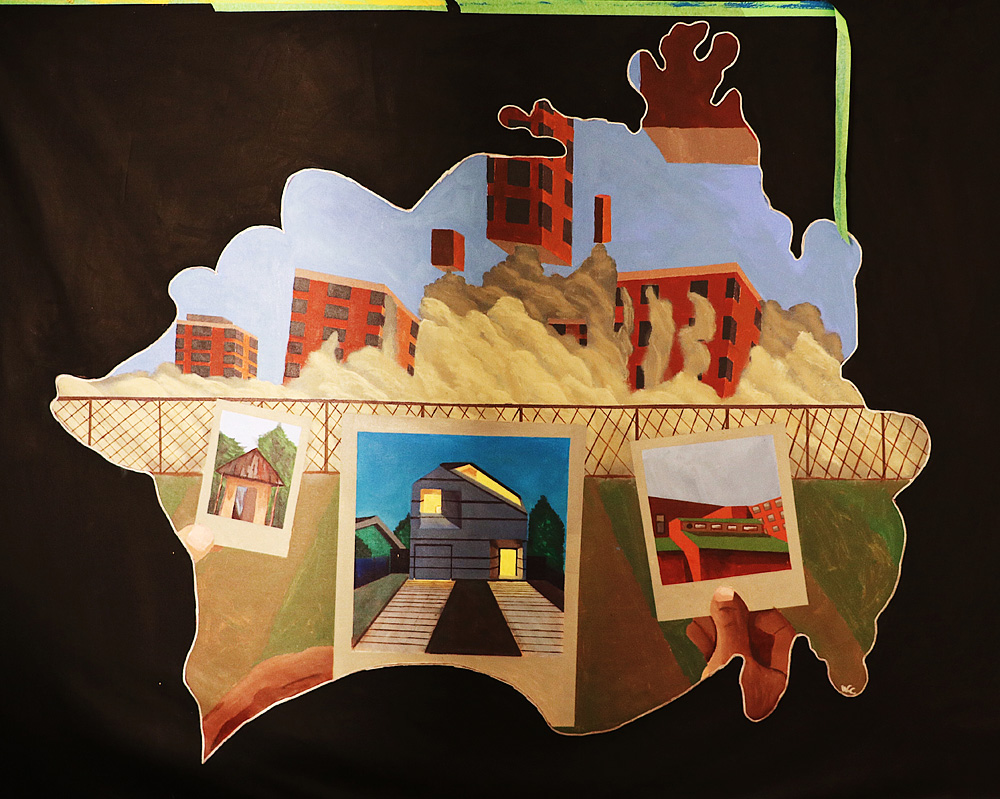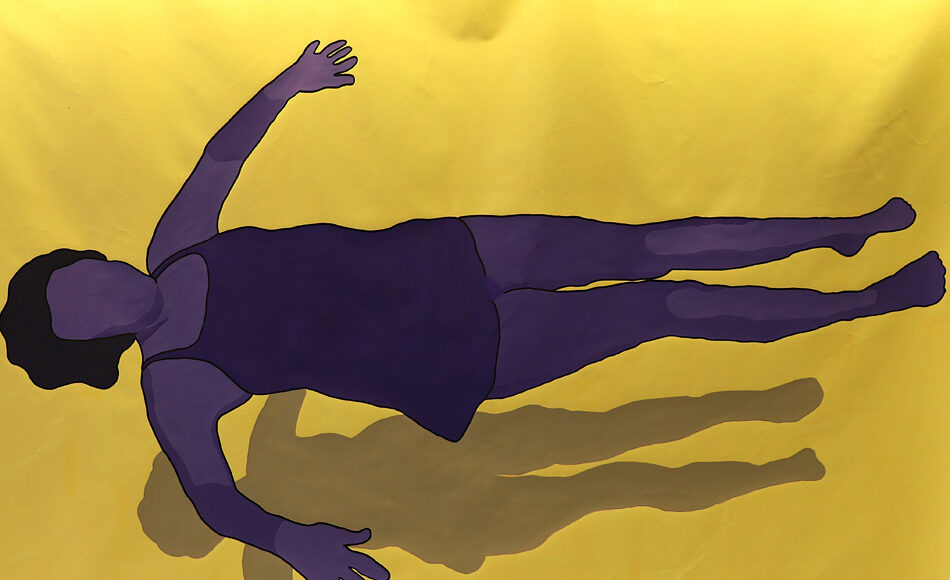By Astrid Lorenzo
Walter Cruz is a multifaceted Bronx artist using his talent to tell stories, evoke change and highlight social issues. His warm smile, calm demeanor and quiet confidence contrasts with his loud and powerful work, some of which covers the walls of his studio space.
The 29-year-old began painting only about five to six years ago, and at first dedicated much of his time to making portraits, specifically of women of color. “I wanted to be a part of that group of artists that represented the marginalized people in the world,” said Cruz. Soon he found himself researching subjects related to blacks and Latinos and exploring ways to tell those stories visually.
After hearing about another police officer not being charged for killing an African American, Cruz decided to paint “Black Lives Matter” on the back of one of his jackets. “I started thinking about how I actually had more things I wanted to say,” says Cruz. “But I didn’t have a budget to do it, so I just literally took all the jackets I had and brought them to the studio. I started painting on them, started thinking about different things that people say to me, different things that I read, different things I hear on the street…capturing enough words to get the message across in a simple way that as soon as you see it, you’re like, ‘Ah, I get it!’”
“Bronx Breeds Greatness” is one of the most notable messages written across the back of some of his jackets. Over time, the jackets have gained a lot of recognition and have brought him many opportunities. However, Cruz remains selective on how many he makes. It takes him a lot of time to think of the right message and then to paint the jacket itself.
In celebration of the Women’s History Month this year, Cruz put together “Be-ing” or “Be: Women of Color,” a collection of acrylic works now being exhibited at the Poe Park Visitors Center in the Bronx. The pieces consist of silhouettes painted in vibrant complementary colors with blank faces, ultimately serving the purpose to allow viewers to imagine themselves as the subjects depicted.
Cruz says his objective was to capture women “being” and living their everyday ordinary lives. “We live in a society, in a world that is constantly coming at them, right?” he says. “Just breathing and just being alive is a political act. So, how do I capture that? How do we, as men, create space for women to just be?” Two of his main influences, he says, are his mother and grandmother, who served as muses for two of the major pieces included in this exhibition.
Cruz studied architecture in school and two weeks before graduating he had to make one of the biggest decisions of his life. He realized that he did not want to continue a career in architecture and that he wanted to pursue the arts. Through a fellowship program, Cruz moved to China for a year, an experience that he says changed his life. He spent time at the Art Zone, also known as the 879 District in Beijing, a bustling neighborhood filled with elaborate contemporary art.
Visiting the Art Zone reminded Cruz of how much he really liked art and during his stay in China he spent most of his time doing street art, including work with spray painting and stencils. At the same time, Cruz started to explore how architecture creates an impact and how it can affect people, a community and black and brown people in general. That idea inspired one of his recent works called, Untitled: Reimagining Public Housing.

Untitled
Upon his return to the states, while working a 9-to-5 job, he became a mentor at an organization that partners mentors with students through similar interests. Cruz was partnered with a freshman that loved art and who wanted to organize his first art show. Over the course of a year, they planned a show. Much to their surprise, 200 to 300 people showed up and even purchased some of the art. This show was the first time Cruz had truly displayed his work publicly.
For a while after the show, he juggled both a job and art. About seven months after, he finally quit his job and has since been committed to art. Over the following two years, Cruz taught himself Photoshop and Illustrator. Soon he became comfortable enough to pick up projects and eventually started getting paid for his work. He worked as an art director and designer at a creative agency, producing work for clients including Sephora and Macy’s. “You don’t always have to go to school to learn the thing,” said Cruz with a wide grin. “You just have to being willing to figure out how to get that knowledge.”
Now, Cruz teaches two fifth grade art classes where he shares the work of black and brown living artists. This, he says, will show them the possibility of becoming artists and how to develop and cultivate skills early on. “Whatever I learn, I always try to reach out and give it back,” he said.
The Laundromat Project has provided Cruz with studio space at 920 Kelly Street in the Bronx for the past year. The organization site says it seeks to bring, “socially relevant and socially engaged arts programming to laundromats and other everyday community spaces in order to reach as many of our neighbors as possible.” While occupying this studio space, Cruz has welcomed and shared the space with other artists or anyone who may need it.
Cruz has covered the walls in positive messages, written in white over a black background for sharp contrast. One wall reads, “Keep your face to the sunshine and you cannot see a shadow.” Cruz says his next steps are to continue integrating his love for architecture into his work and creating an experience for his audiences, rather than just traditional art. He also mentions continuing to voice the stories of the black and colored slightly odd phrasing community and using his work to help others.













